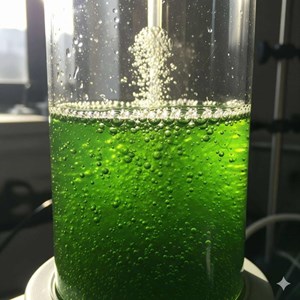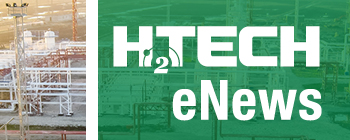News
Satoyama Mace Initiative launches bio-integrated breakthrough for sustainable H2 and carbon equity
The Satoyama Mace Initiative announced a scientific breakthrough that integrates frontier clean energy innovation with sustainable governance and equitable carbon credit systems. The research, recently published in ACS Sustainable Resource Management, introduces a novel Chlorophyll/ chlorophyll-modified cuprous oxide (Cu₂O) heterostructure photoelectrode that dramatically enhances photoelectrochemical (PEC) water splitting for renewable H2 generation.
The study demonstrates that Cu₂O electrodes show superior light absorption, particularly in the Q-band region (600 nm–700 nm), leading to a photocurrent density of 3.26 mA/cm² and a significant increase in applied bias photon-to-current efficiency (ABPE) from 0.82% to 1.37%. Compared with unmodified Cu₂O, the chlorophyll-modified electrode exhibited a sevenfold improvement in stability, with only a 7.9% photocurrent decline after extended operation versus a 34.8% decline in the unmodified version.

The modification also improved charge carrier lifetime (from 0.9 to 1.1 ms), validating enhanced charge separation and reduced recombination. Density of states (DOS) calculations confirmed bonding interactions between Mg (from chlorophyll) and O (from Cu₂O), ensuring robust heterojunction formation.
“This bio-inspired electrode design not only accelerates solar-driven H2 production but also prevents rapid material degradation, making it both efficient and durable,” explained the Satoyama Mace Initiative’s research team.
The breakthrough is not confined to laboratory achievement. The Satoyama Mace Initiative embeds this technology within its SEPLS Carbon Credit Regional Revitalization Center, which advances socio-ecological production landscapes and seascapes (SEPLS) as nature-based solutions (NbS) for climate action.
At the core of this integration is the Satoyama Mace Initiative Platform, a transnational international project endorsed by UNU-IAS/IPSI in 2024 (platform link). The platform supports the implementation of the Convention on Biological Diversity (CBD) by linking science, community action, and carbon markets.
Social-ecological-productive landscapes not only safeguard biodiversity and cultural diversity but also strengthen ecological connectivity across protected areas. By building sustainable value chains through carbon credits, the Platform provides both climate mitigation and livelihood co-benefits for indigenous and local communities.
The Satoyama Mace Initiative has outlined a strategy that integrates PEC technology and SEPLS carbon credits through five action pillars:
- Knowledge co-production, management and uptake: Develop interdisciplinary research and knowledge exchange linking PEC clean energy with biodiversity-based carbon systems.
- Institutional frameworks and capacity development: Build governance mechanisms to integrate SEPLS approaches into climate, biodiversity, agri-food, and disaster risk reduction policies.
- Area-based conservation measures (OECMs and indigenous territories): Expand recognition of indigenous lands and traditional ecological knowledge, embedding them into carbon credit frameworks.
- Ecosystem restoration and carbon credit integration: Scale restoration projects that deliver biodiversity benefits, carbon sequestration, and community livelihoods.
- Sustainable value chain development: Foster fair and transparent markets, combining NbS innovations with traditional practices to support resilient economies.
This dual achievement—scientific and institutional—represents a new model for science-policy integration. By combining advanced PEC electrodes with SEPLS-based governance and leveraging the Satoyama Mace Initiative Platform, the Initiative delivers a holistic solution that addresses urgent global challenges: renewable energy, biodiversity loss, and social equity.
“Scientific breakthroughs must walk hand-in-hand with sustainability and fairness,” the Initiative declared. “Our Chlorophyll/Cu₂O electrode is more than a clean energy device—it symbolizes how nature and technology can co-create global solutions.”

